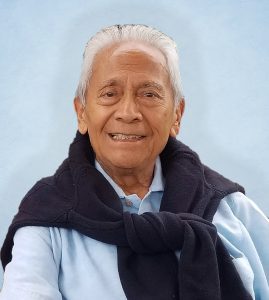How Gloria Carido Nomura bridges diversity: A FAHM portrait

By Peter Jamero
The fourth of five children of Leon and Camila Carido, Gloria was born on February 23, 1941 in Stockton CA. Like many Filipino babies of the times, she was delivered at home by a midwife.
Her father, who immigrated from Bohol, Philippines during the 1920s, worked in the rich agricultural fields around Stockton. Her mother, who came from the Philippine island of Leyte, was employed in a local tomato cannery. For most of Gloria’s early years the Carido family resided in South Stockton, where the large Filipino population was relegated to what then was a segregated Stockton. Her friends, schoolmates, and social life were with other Filipinos. As a result, she did not encounter discrimination. Her first brush with racial prejudice was when the family moved to a Filipino farm labor camp in nearby Walnut Grove for a short time during tomato harvest. At school, she found that students there practiced an ethnic-based hierarchy where Mexican and “Okie” migrant farmworkers were at the bottom, Filipinos were a step up, and local whites were at the top. She got along with all groups, finding she had much in common with all of them. At the same time she learned to appreciate their differences. In retrospect, Gloria believes these experiences laid the foundation for her being able to bridge differences among all people in later years.
Gloria is a product of Stockton schools and went on to graduate from Edison High School, Delta College, Sacramento State, and College (now University) of Pacific. She described her formative years as being quiet and unassuming – traits that contrast with her community and civic activities during her later years. This should not be surprising. Throughout Gloria’s youth, her parents were heavily involved with the Dagohoy Lodge of the Legionarios del Trabajo – a Filipino fraternal mutual aid organization — and with their local parish, St. George’s Catholic Church. The Dagohoy Lodge hall was the scene of many fun events for Gloria, especially during the Christmas season when every child in attendance at the annual holiday party received gifts. Her parents’ strong Catholic faith was passed on to their children. Gloria remembers when she wanted to go to the movies on Sundays, her father telling her, “If you don’t have time to go to church, you don’t have time to go to the movies.”
Following her graduation from college Gloria joined the Edison High school faculty. She also found her South Stockton community being threatened by redevelopment. She joined the St. George’s Church Parents Council and then the Neighborhood Association’s “Save Stockton” program, quickly rising as chairperson of both organizations. As chairperson of the Neighborhood Association, she worked closely with the Police Department’s Prevention Partnership Program where she drew the attention of Stockton Mayor Joan Darrah. One day, the mayor encouraged her to run for the Stockton City Council, representing her district. Gloria won the election – the first Filipino/a to do so — became Vice Mayor, and served two terms from 1997 to 2004 until termed out.
Gloria enjoyed her years on the City Council, especially her interactions with Stockton’s racially diverse residents. She learned about the issues in her broad constituency. She learned to deal with the political reality that for every position she took, there was always a segment that opposed her. Her least favorite activity — asking residents for money during election campaigns. In addition to her tenure on the City Council, Gloria continued to teach at Edison High where she taught English and history for 18 years before retiring. She takes great pride in teaching and would like to think she had something to do with her students’ achievements after high school.
While she was on the City Council, Gloria underwent two heart attacks and had a successful quadruple by-pass — a 20-year survivor. Now retired, her old South Stockton constituencies still refer to her as Vice Mayor. Today, her life may be relatively quieter; but she remains involved – working on behalf of the community and supporting the work of the Filipino American National Historical Museum in Stockton.

Peter Jamero was born in 1930 in Oakdale, California, the eldest son of Filipino immigrants. He is active with numerous community organizations including several terms as founding national vice-president of the Filipino American National Historical Society. His memoir, “Growing Up Brown: Memoirs of a Filipino American,” was published by the University of Washington Press in 2006. His latest book is “Vanishing Filipino Americans: The Bridge Generation,” published by the University Press of America in 2011. This piece was originally published in https://peterjamero.net/ and is being reissued in The FilAm with permission, in honor of Filipino American History Month.


(C) The FilAm 2020











